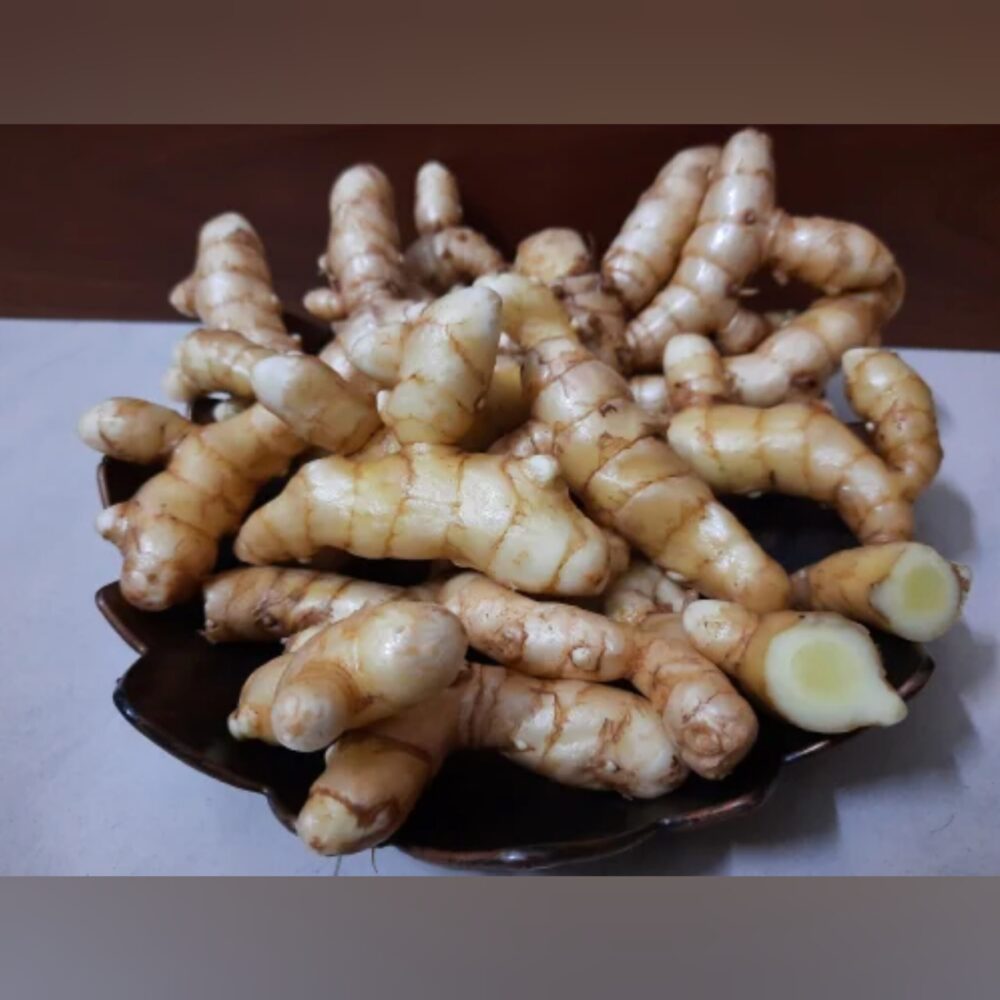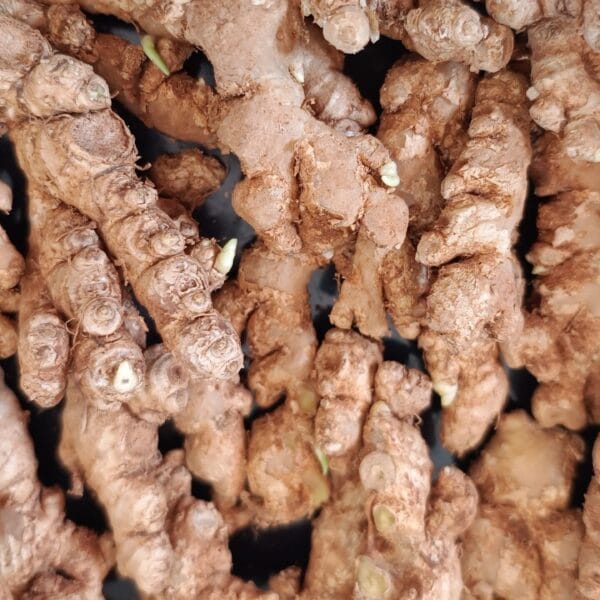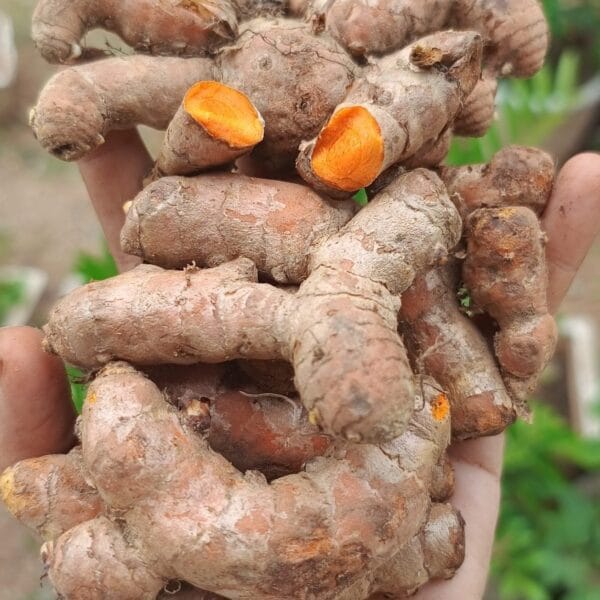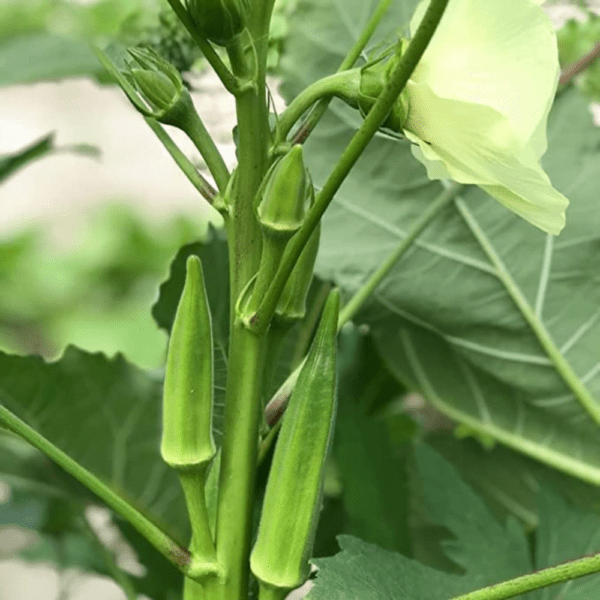Mango Ginger Rhizome seeds
Mango Ginger Rhizome seeds
Quantity: 500 grams
Mango ginger (Curcuma amada) is a lesser-known but highly valuable member of the ginger family (Zingiberaceae), native to India and other parts of Southeast Asia. Known for its mango-like fragrance and ginger-like taste, this aromatic root is used for both culinary and medicinal purposes.
Mango ginger is especially revered in Indian cuisine, where it’s used as a flavoring agent in curries, pickles, and salads, offering a unique twist on the traditional ginger flavor. It also has numerous therapeutic properties, making it a popular choice in Ayurvedic medicine and traditional remedies.
If you’re looking to grow this flavorful and versatile plant in your own garden, Mango Ginger seeds or rhizomes are a great investment.
Out of stock
Mango Ginger Rhizome seeds
Mango Ginger Seeds (Curcuma amada): A Unique Root with Distinctive Flavor and Medicinal Benefits
Mango ginger (Curcuma amada) is a lesser-known but highly valuable member of the ginger family (Zingiberaceae), native to India and other parts of Southeast Asia. Known for its mango-like fragrance and ginger-like taste, this aromatic root is used for both culinary and medicinal purposes. Mango Ginger Rhizome seeds.
Mango ginger is especially revered in Indian cuisine, where it’s used as a flavoring agent in curries, pickles, and salads, offering a unique twist on the traditional ginger flavor. It also has numerous therapeutic properties, making it a popular choice in Ayurvedic medicine and traditional remedies.
If you’re looking to grow this flavorful and versatile plant in your own garden, Mango Ginger seeds or rhizomes are a great investment. Here’s everything you need to know about Mango Ginger, from its unique characteristics to how you can grow it successfully. Mango Ginger Rhizome seeds.
What is Mango Ginger?
- Scientific Name: Curcuma amada
- Common Names: Mango Ginger, Amba Haldi (in Hindi), Mango Turmeric
- Origin: Native to India and Southeast Asia, Mango Ginger is primarily found in tropical regions where it thrives in warm, humid climates.
- Family: Zingiberaceae (the same family as ginger, turmeric, and cardamom)
- Appearance: The plant grows similar to turmeric and regular ginger, with large, green, lance-shaped leaves and tall, flowering stems. The rhizomes, however, resemble ginger, though they are mango-scented and have a lighter, pale yellow to off-white color.
The most distinctive feature of Mango Ginger is its mango-like fragrance that emanates from the fresh rhizomes, which is where it gets its name. Despite the fruity aroma, it has a sharp, spicy flavor profile similar to ginger, with a hint of tartness and citrus.
Key Features and Benefits of Mango Ginger
1. Distinctive Mango Aroma
- Mango Ginger has a unique mango-like fragrance, which is one of its most intriguing features. The rhizomes emit a fruity, sweet-smelling aroma when fresh, resembling a ripe mango.
- This aroma is a key differentiator from regular ginger and makes Mango Ginger a delightful addition to dishes that require a mild, aromatic spiciness.
2. Culinary Uses
- Flavoring Agent: Mango Ginger is used in Indian cuisine to impart a delicate ginger-like flavor but with a slightly milder taste. It’s commonly used in curries, soups, salads, pickles, and spice pastes.
- Fresh Mango Ginger: The fresh rhizomes can be grated, sliced, or ground into a paste and added to dishes for flavor. It is also used as a tangy ingredient in vegetable curries and sauces.
- Mango Ginger Pickle: One of the traditional preparations of Mango Ginger is to make pickles with it. The root can be chopped and mixed with spices and vinegar for a tangy, spicy accompaniment to Indian meals.
- Mango Ginger in Drinks: Fresh Mango Ginger is often added to herbal teas, smoothies, or juice blends for its unique flavor and digestive benefits.
3. Medicinal Benefits
Mango Ginger has been used in traditional medicine for centuries, particularly in Ayurvedic and Siddha practices, due to its anti-inflammatory, antioxidant, and digestive properties.
- Digestive Health: Mango Ginger is excellent for improving digestion and relieving indigestion or nausea. It has natural carminative properties, helping to relieve gas and bloating. It is often used to treat stomach issues like dyspepsia, gastrointestinal upset, and heartburn.
- Anti-inflammatory: Similar to ginger, Mango Ginger is known for its anti-inflammatory properties, making it effective in treating joint pain, arthritis, and swelling.
- Antioxidant: The plant contains powerful antioxidants, which help to protect the body’s cells from damage caused by free radicals, reducing the risk of chronic diseases and aging.
- Immune Booster: Mango Ginger is a natural immune booster and has antibacterial and antiviral properties. It is used to treat cough, cold, and respiratory infections.
- Skin Health: Mango Ginger is also used in beauty and skincare treatments due to its anti-inflammatory and antiseptic properties. It is sometimes applied topically to treat skin infections or irritations. Mango Ginger Rhizome seeds
4. Cultural and Ritual Use
- In Indian culture, Mango Ginger plays a role in traditional rituals and spiritual practices. It is sometimes used in Ayurvedic remedies to balance the body’s doshas and improve overall health.
- Mango Ginger is believed to possess cooling properties, and in many regions, it is consumed during the hot summer months to help balance the body’s temperature and provide relief from heat.
How to Grow Mango Ginger
Mango Ginger is a relatively easy plant to grow if you provide it with the right conditions. Here’s how to grow it successfully in your garden:
1. Choosing the Right Location
- Climate: Mango Ginger thrives in tropical and subtropical climates. It requires warm temperatures (ideally between 25-30°C or 77-86°F) and high humidity to grow well. It is ideal for regions with moderate rainfall. Mango Ginger Rhizome seeds
- Soil: Mango Ginger prefers loamy, well-drained soil rich in organic matter. The soil should be slightly acidic to neutral (pH 6.0-7.0). It is important that the soil drains well to prevent waterlogging, which can lead to rot.
- Sunlight: Mango Ginger does best in partial shade. While it can tolerate some sunlight, it grows best in a location with filtered sunlight or shade, especially during the hottest parts of the day.
2. Planting Mango Ginger Rhizomes
- Mango Ginger is propagated by rhizomes (not seeds), so you will need healthy rhizomes to plant.
- Choose plump, healthy rhizomes with visible growth buds. You can purchase Mango Ginger rhizomes from reputable sellers or harvest them from a mature plant. Mango Ginger Rhizome seeds
- Plant the rhizomes about 2-3 inches deep in the soil, with the buds facing upward. Space the rhizomes about 6-8 inches apart to allow for proper root growth. Mango Ginger Rhizome seeds.
- If planting in pots or containers, use a large, deep container with good drainage holes to accommodate the plant’s growing roots. Mango Ginger Rhizome seeds
3. Watering and Care
- Mango Ginger requires regular watering to keep the soil moist but not waterlogged. It thrives in humid conditions, so it’s important to keep the soil consistently moist throughout the growing season.
- Mulching around the base of the plant can help retain moisture and keep the soil temperature stable.
- Fertilize the plant with organic compost or a balanced fertilizer to promote healthy growth. You can also add some organic matter or manure during planting for better results. Mango Ginger Rhizome seeds.
4. Harvesting Mango Ginger
- Mango Ginger usually takes about 8-10 months to mature. When the plant’s leaves begin to yellow and die back, it’s a sign that the rhizomes are ready for harvest.
- Carefully dig up the rhizomes using a garden fork or shovel, ensuring you don’t damage them. The rhizomes can be used immediately or stored in a cool, dry place for later use. Mango Ginger Rhizome seeds
5. Propagation and Replanting
- After harvesting, save some of the rhizomes to replant for the next season. Cut the rhizomes into pieces, ensuring each piece has at least one growth bud. Mango Ginger Rhizome seeds
- Replant the rhizomes in the following planting season, repeating the process for continuous harvest.
Why Buy Mango Ginger Seeds (Rhizomes) from Hoogaseeds?
- Premium Quality: At Hoogaseeds, we offer high-quality Mango Ginger rhizomes, hand-selected for their superior growth potential and flavor. Mango Ginger Rhizome seeds
- Non-GMO and Organic: Our Mango Ginger seeds are naturally grown, free from chemicals, and non-GMO to ensure you’re growing a healthy and sustainable crop.
- Convenient Online Shopping: Visit www.hoogaseeds.com/shop to purchase Mango Ginger rhizomes, and enjoy fast, reliable delivery straight to your door.
Mango Ginger Rhizome seeds
| Weight | 700 g |
|---|







Reviews
There are no reviews yet.